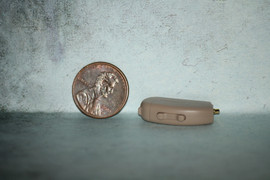Tips for Teaching Students with Hearing Loss
May 02, 2022
It may come as a surprise to many but hearing loss is quite prevalent in children. Three of every 1,000 kids are born with some level of hearing impairment and 15% can develop the disability later in childhood. Given that hearing and learning go hand-in-hand, teaching a child with hearing loss can be challenging. Apart from special attention, they require a mindful and sensitive approach.

It’s thus crucial for educators to be accommodating and fully supportive to ensure students with hearing problems have access to quality education. Read on for some simple teaching strategies that can make a big difference for hard of hearing/deaf students in the classroom.
Classroom Adaptations:
Most students who are hard of hearing rely on their vision to receive information. Skipping the traditional way of organizing desks in columns and arranging them in a circular or horseshoe pattern enables them to visually see everyone and participate in class discussions. If this is not a feasible option, students with impaired hearing must be placed in the front row so that the instructor’s face is clearly discernible.
Also, there is a need for the teacher to maintain eye contact and speak with clarity. This is extremely important if the student is lip-reading or using a hearing aid. Also, educators must refrain from speaking when turned away from the student, while writing on the blackboard or walking around the room.
Incorporate Advanced Technology:
Students with hearing impairment need a modified teaching environment. Thanks to advancements in technology, the classroom can be equipped with well-designed amplification systems for maximum sound production. Also, the use of visual stimuli for illustrating concepts can help students with hearing disabilities understand and comprehend the content better.
Non-verbal cues like facial expressions and body language are effective for communication and highlighting points. Make sure there is adequate lighting for students with hearing issues to see the educator as well as the visual cues being used on display boards for interpretation.
Keep Background Noise Minimum:
Students using assistive devices with special hearing aid parts are very sensitive to environmental sounds. This can impact their concentration levels hence the background noise from echoes, student chatter and scraping furniture, etc. must be kept to a minimum.
Closing doors, hanging shades across tall windows can help in blocking distractive sounds from the hallway to a large extent. Carpeted flooring, acoustically tiled ceilings, and tennis balls on squeaky chair bottoms can absorb a great deal of the noise to provide a good listening atmosphere.
Hearing Aid Devices:
Sensory and assistive listening devices like hearing aids are designed to optimize the auditory signals of speech sounds that reach the brain for processing. The contraption that fits snugly in or on the ear enhances a student’s ability to comprehend conversations clearly in a noisy classroom. The assistive listening system uses a microphone to transmit the sounds directly to the child’s hearing device.
This solution can help students thrive socially and academically in mainstream schools. While you can buy hearing aids online, it’s important for a student suffering from hearing loss to undergo a diagnostic test by a skilled audiologist for a thorough evaluation before being fitted with the device.
Assign a Hearing Buddy:
Students with hearing loss lag in social skills and start feeling isolated as they tend to retreat into themselves. To facilitate effective communication, encourage their classmates to learn some basic sign language so they can interact, relate to others, and participate in a variety of school activities.
Try to accommodate the diverse needs of hearing-impaired students by providing them an enriched environment to enjoy a normal academic life. It might be helpful to pair a hard of hearing student with a friendly classmate or hearing buddy to support their social, physical, and emotional well-being.










